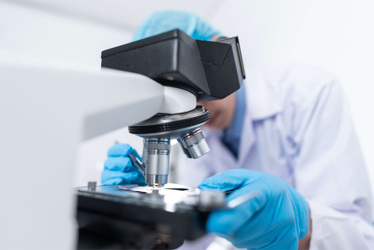Why Do Super-Resolution Microscopy Advancements Leverage Piezo Technology?

By Emily Newton

Super-resolution microscopy gives researchers a non-destructive way to observe molecular-level intracellular interactions. Although first proposed in the 1970s, this method has become more widely accessible and powerful over the past couple of decades. Technologies that use piezo in microscopy are among those that have furthered the progress. Although the piezoelectric effect generates electricity in response to mechanical pressure on a material, it also makes super-resolution microscopy more effective.
Achieving Precision With Piezo in Microscopy
All types of super-resolution microscopy involve motion, whether to move a probe, electronic beam, or sample. Piezo mechanics provide high-precision results that ensure accuracy and further researchers’ work. They also control signals in less than a millisecond, enabling ultra-fast focusing.
This fast and ultra-precise motion occurs thanks to piezo stages, which are surfaces controlled by electric motors. The stage holds a sample for analysis with a super-resolution microscope. In addition to a motor and mechanical elements that make it move, the stage contains controllers and positioning devices that respond to computer interface input.
Piezo stages in super-resolution microscopy usually only move 100–300 nanometers after finding the optimal focusing planes for individual samples. Although those tiny movements happen rapidly, the piezo stage becomes highly stable afterward. Additionally, some applications require moving the stage across greater distances, achieved by a spring and flexure.
Besides generating electricity under pressure, piezoelectric materials work on the inverse principle. In super-resolution microscopy, they create movement by expanding or contracting, changing the sample’s position as necessary.
Improving the Accessibility of Super-Resolution Microscopy
Until less than a decade ago, super-resolution microscopy required users to have expertise in subjects such as physics, chemistry, and biology. Although many experienced people in those fields still use it, efforts have occurred to improve accessibility by making products easier
to use and less complicated to set up.
Super-Resolution Microscopy Through Special Attachments
Removing those barriers should improve scientific advancement and exploration. One French company reveals the possibilities with its multimodal imaging platform that fits inside the camera port of any inverted microscope. Two of the platform’s built-in configurations support single-molecule localization microscopy, allowing people to use these technologies without buying specialized equipment.
Since they can then see live biological processes, this approach is beneficial for scientists studying individual cell interactions. Such observations support advancements such as antibody-drug conjugates. They use monoclonal antibodies and a chemical linker to locate and attach to single cancer cells.
Ongoing research suggests this ultra-targeted approach could be more effective and cause fewer side effects than traditional chemotherapy. However, the overall results depend on numerous factors, including the cancer type. Super-resolution microscopy applications could expand what researchers know, making this treatment available to more patients.
Building an Affordable Benchtop Super-Resolution Microscope
In another case, researchers sought to make super-resolution more accessible by building a benchtop model that was significantly more affordable than commercially available options. They called their creation the MiEye, applying piezo in microscopy to it to offer an autofocus feature for samples. More specifically, this addition prevents X-axis drift with a closed feedback loop between the piezo stage and an infrared laser.
An accompanying piezo controller connects to a computer via a USB cable, allowing people to configure it using a graphical user interface. By going through the on-screen process, they can tweak the piezo stage’s position through coarse or fine movements. Active piezo stabilization occurs when the system detects the central peak of the back-reflected infrared beam and continuously moves the stage to keep it at the desired Z-axis position. Additionally, people can toggle the autofocus feature on or off with a dedicated interface button.
The developers concluded that this open-source innovation is a valuable addition to current super-resolution microscopy options, especially for users on limited budgets or those who want to adapt the design to meet specific needs. Experiments showed the setup offered excellent sample stability. Moreover, the group used commercially available optomechanics and a CNC-milled microscope body in their design, concluding that others could reproduce it for approximately €50,000.
Researcher Carlas Smith was not involved in this project, but he uses super-resolution microscopy to study biological tissues. He put things in perspective by explaining that optical microscopes create images on the quarter-micron scale, but super-resolution microscopes offer nearly 100 times more accuracy. If projects such as the more affordable open-source project gain momentum among prospective users, more scientists could avail themselves of such powerful results while encountering fewer financial barriers.
Applications of Piezo in Microscopy Support Scientific Progress
These examples illustrate how piezoelectric materials work on the inverse principle to move samples under examination by super-resolution microscopes. They provide ultra-precise manipulation and excellent stability, allowing researchers to make accurate and confident conclusions that could ultimately enable them to make fascinating discoveries that broaden scientific knowledge and facilitate advancements.
As more manufacturers and independent groups explore ways to improve affordability and accessibility, those efforts should bring high-resolution microscopy to more scientists who want to use it, potentially allowing them to do so by upgrading their current microscopes rather than buying new ones. In any case, piezoelectric materials and mechanics will remain essential for achieving reliable results.
